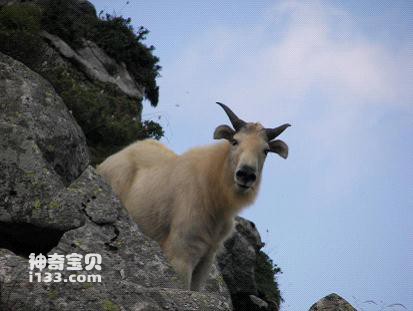Many people know about the camel, known as the ship of the desert, but they may not necessarily know about the yak, known as the ship of the plateau. The altitude of the Qinghai-Tibet Plateau is higher than 3,000 meters. The air here is thin, the air pressure is low, the weather is cold, and the ecological environment is very harsh. Cattle and buffaloes that live in the plains cannot survive here. Through long-term natural selection, only one type of yak with extremely strong adaptability can survive well on the plateau, and can survive the winter safely in the wild even under conditions of minus 30-40 degrees Celsius.

Yak has a long body, short limbs, a strong waist, stable hooves, long hair all over its body, strong strength, can tolerate rough feeding, cold and hunger, is not afraid of wind and snow, and is good at walking on rugged trails, and can sleep on ice and snow. Yak is full of treasures. Its meat is tender in texture, bright red in color, low in fat, high in protein, rich in lean meat, and rich in game flavor. It is a very popular high-quality meat. Its wool fiber is slender and flexible. It is used by herdsmen to weave small tents. It is warm in winter, cool in summer, sheltered from wind and waterproof, and durable. Its velvet is soft, comfortable, and extremely fine, and can be used as high-end wool. Its skin can be made into exquisite leather, which is rich in luster and of exquisite material. It is the best leather. The bones are boiled to make bone glue, which is transparent and bright, has strong viscosity and is widely used. Not only is the yak a treasure, it is also one of the favorite means of transportation for herdsmen in plateau pastoral areas, so it is known as the "ship of the plateau." There is also a kind of white yak distributed in Menyuan, Qinghai and other places. Because of its white down, it is regarded as a "sacred cow" by people.
The yak is the most unusual and representative large animal on the Tibetan Plateau. It has a huge body shape and thick long hair like the woolly rhinoceros. It may be closest to the woolly rhinoceros in its special adaptation to the cold open environment. Although yak fossils are so far very rare, it has been distributed as far north as the Lake Baikal region of Siberia during the Pleistocene and as far as northern Pakistan during the Holocene. Recent molecular biological evidence has also consistently identified yak and European/American bison as a sister group. In the phylogenetic supertree constructed based on this, most people agree that yak and bison have a common ancestor that originated in central Asia. The Americas were invaded across the Bering Land Bridge in the late Pleistocene.
animal tags:
We created this article in conjunction with AI technology, then made sure it was fact-checked and edited by a Animals Top editor.